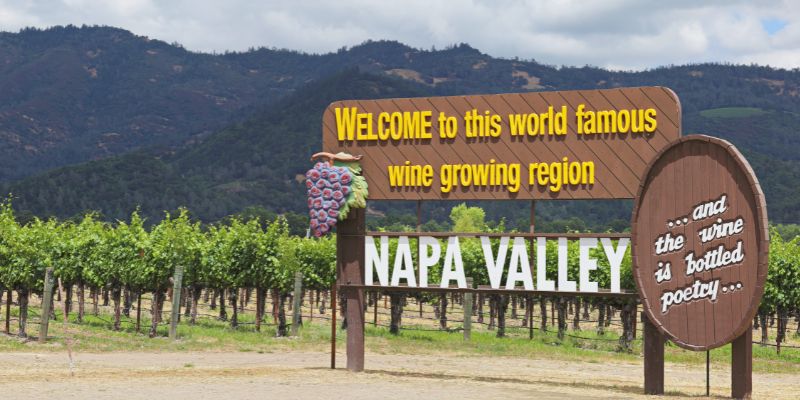Introductory Wine Course
New World Wines
New World wine comes from regions outside traditional European winemaking areas, primarily in the Americas, Australia, New Zealand, South Africa, and parts of Asia. These regions developed their wine industries more recently, often within the last few centuries, bringing fresh perspectives to grape growing and winemaking. New World wines typically emphasize ripe fruit flavors, varietal character, and approachability, often showcasing the grape variety prominently on the label rather than geographic origin alone. Understanding New World wine means appreciating innovation, experimentation, and a philosophy that balances modern technology with terroir expression to create wines that communicate clearly and directly.
Defining New World: Innovation and Expression
New World wine regions include the United States, Australia, New Zealand, Chile, Argentina, South Africa, and others where viticulture arrived through European colonization and later immigration. Unlike Old World regions bound by centuries of tradition and strict regulation, New World producers enjoy greater freedom to experiment with grape varieties, blending practices, and winemaking techniques. This flexibility encourages innovation in vineyard management, fermentation technology, and oak aging programs. New World wines generally feature more pronounced fruit flavors, higher alcohol levels, softer acidity, and fuller body compared to their Old World counterparts. Many regions benefit from consistent sunshine and reliable growing seasons, producing riper grapes with more predictable results year to year. Winemakers often intervene more actively, using temperature-controlled fermentation, selected yeasts, and precisely managed oak regimens to craft specific flavor profiles. The New World approach prioritizes accessibility and immediate enjoyment while still capable of producing complex, age-worthy wines. Labels typically emphasize grape variety, making selection straightforward for consumers learning to identify their preferences based on varietal characteristics rather than geographic appellations.
A prevalent style of wine found in the new world is one that is more fruit-forward nose and palate.
From California to Willamette Valley
California dominates American wine production, with Napa Valley representing the pinnacle of New World Cabernet Sauvignon. Napa's warm days and cool nights produce powerful, fruit-forward Cabernets with blackberry, cassis, and plum flavors, complemented by vanilla and toast from new oak aging. These wines show riper tannins and higher alcohol than Bordeaux, creating immediate appeal alongside aging potential. Sonoma County offers diversity across multiple appellations, from Russian River Valley's exceptional Pinot Noir and Chardonnay to Dry Creek Valley's Zinfandel. California's Central Coast, including Paso Robles and Santa Barbara County, produces everything from rich Rhône varieties to elegant coastal Pinot Noir. Oregon's Willamette Valley has established itself as America's premier Pinot Noir region, where cool climate conditions and volcanic soils create wines that bridge Old and New World styles. Willamette Pinot Noir shows bright red fruit, earthy complexity, and elegant structure reminiscent of Burgundy but with slightly riper fruit expression. The region also produces excellent Chardonnay and increasingly impressive Riesling, demonstrating how cooler New World regions can achieve both varietal purity and subtle complexity.

Australia and Argentina are the Southern Hemisphere Stars
Australia built its international reputation on Shiraz, producing styles ranging from elegant and peppery to massively concentrated and powerful. Barossa Valley creates the archetypal Australian Shiraz with intense blackberry and plum fruit, chocolate notes, and luxurious texture amplified by ripe tannins and generous alcohol. McLaren Vale offers similar power with added mint and eucalyptus characteristics, while cooler regions like the Yarra Valley and Adelaide Hills craft more restrained, peppery expressions closer to French Syrah in spirit. Australia also excels with Chardonnay, Cabernet Sauvignon, and increasingly, alternative varieties like Grenache and Tempranillo. Argentina discovered its signature grape in Malbec, which thrives in Mendoza's high-altitude vineyards where intense sunlight and dramatic temperature swings produce deeply colored wines with plum, blackberry, and violet flavors alongside velvety tannins and full body. Argentine Malbec shows more structure and freshness than its French origins suggest, balancing New World ripeness with mountain-grown acidity. The country also produces excellent Torrontés, an aromatic white variety, and compelling Cabernet Sauvignon and Bonarda.
New World wines demonstrate how viticulture adapts to diverse climates and geographies while embracing innovation and varietal expression. From California's powerful Cabernets to Willamette's elegant Pinot Noirs, and from Australian Shiraz to Argentine Malbec, these regions offer fruit-forward, accessible wines that communicate their character clearly. Exploring New World wines reveals how modern techniques and favorable growing conditions combine to create distinctive styles that complement the global wine landscape while continuing to evolve and refine their regional identities.